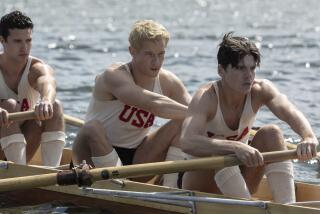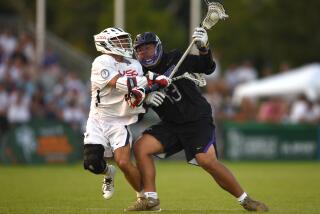RECREATION : U.S. Trails World in Orienteering
Telling somebody you’re an orienteer no doubt gets a different reaction in Scandinavia than in the United States.
“An orienteer? Somebody who’s been to the Orient,” a friend says.
“You wear fake floppy ears and sing songs?” a co-worker says, confusing orienteers with Mouseketeers.
Orienteers, who pride themselves on their sense of direction, are lost in America. According to the latest figures, only 15,000 Americans do orienteering on a regular basis. In countries where the sport is popular, more orienteers than that show up for a single meet.
“In Sweden, they get 25,000 competitors” at a competition, said Jack Williams, a member of the U. S. Orienteering Federation. “Major U.S. competitions draw only 400.”
According to Williams, orienteering is the biggest sport in Scandinavia, behind soccer. On any given weekend in Norway, an orienteer has a choice of three or four competitions within an hour’s drive of Oslo. Williams, who visited Scandinavia recently, reports that large wooded sections of those countries have been dedicated to orienteering.
“America is an undeveloped country in the sport,” said Williams, who lives in Kennett Square, Pa., and has been an orienteer for nine years.
Americans have never taken to orienteering. The sport was developed in the Scandinavian countries around the turn of the century, but the first orienteering event in this country did not take place until 1941. Participation never rose above a few thousand and actually declined in the 1980s. According to U. S. Olympic Committee figures, the United States ranks last in the world in youth participation.
And U.S. orienteers cannot keep up with foreign competitors. Sharon Crawford of Massachusetts, for example, has won almost a dozen national titles but has not come close to winning a world championship.
“We don’t disgrace ourselves, but U.S. orienteers are still babies compared with the rest of the world,” USOF Executive Director Robin Shannonhouse said.
But they might grow up, thanks to a major move by the USOC. It might not seem that orienteering has anything in common with curling, karate, water skiing and squash, but it does: They’re all Class C members of the USOC, minor sports climbing a long road to credibility by trying to become an official Olympic event.
Three years ago, the USOF was given Class C status, which means that the USOC recognizes the federation as the official governing body of the sport.
The USOC, Shannonhouse said, has funded a program to certify orienteering coaches, and the federation has instituted a nationwide youth program.
More to Read
Sign up for Essential California
The most important California stories and recommendations in your inbox every morning.
You may occasionally receive promotional content from the Los Angeles Times.










